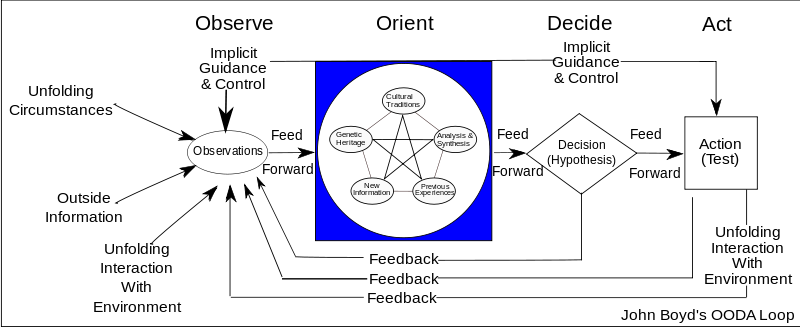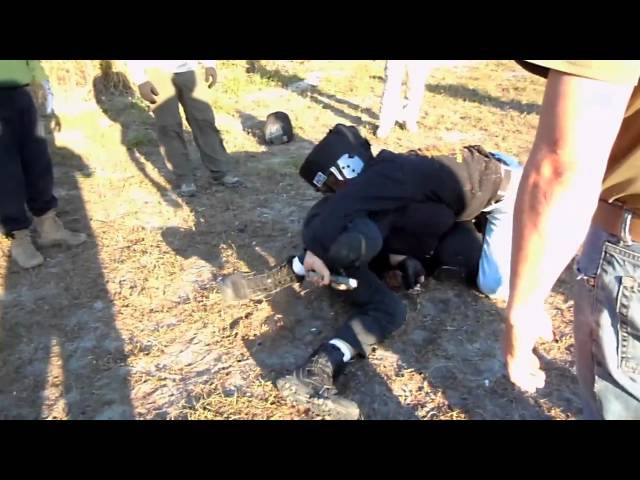The Interview is a process of victim selection which few prey know anything about. Unfortunately, this causes them to pass the Interview process. Having an understanding of what it is and how it is conducted, and more importantly, why is instrumental in failing it. Why would you want to fail an interview? Because this one may cost you your life!
Victimology is the study of victims and why they were chosen to be victims in the first place. When interviewed after a violent encounter, most victims report that they had no idea why they were attacked and even go so far as to state that they had no idea what was about to happen. After probing by investigators, however, most begin to remember details leading up to the attack that did not seem quite right. Gavin de Becker in his incredible book, The Gift of Fear, describes many such incidents.
The reality is that most people remember things prior to the attack that after review, seemed like strange questions or statements. This is a usually part of the predator’s Interview process. Only when a potential prey passes his/her Interview, does the predator solidify their choice of prey.
There are different types of Interviews. Some are verbal and others are non-verbal. They can also be done either from a distance or close-up. The key is to understand that they do occur and know how to fail them!
Let’s look at a common situation to help illustrate one way the Interview is conducted. Also keep in mind that there is a Force Continuum at work here. In a situation where an individual wants to abduct a young lady, he may approach her offering to help her carry groceries into her apartment. If she accepts, then he moves onto the next Interview “Question.” If she refuses, he may make a second offer with a little more force. If she relents here, then he has learned that while she may initially resist, with more pressure, she will relent. This is bad news indeed!
If the predator moves onto the next step, he may carry the groceries from her car to her door. If she stops at the door and thanks him, itending for him to stay outside, he will take what he has learned and insist on “being a gentleman” and putting the groceries on her counter. With his knowledge he has gained that it may take a couple of attempts of insisting, he will test her further to see whether she allows him in.
At this point, if she does allow him into her apartment, an attack is likely. Naturally, he may overplay the idea of being a “nice guy.” He may also bring more manipulation methods into play such as Forced Teaming, which we will likely discuss later. The more alarms that she can recognize, the more likely she is to avoid the problem by failing the Interview.
Why does the predator go through all of this? Basically, because they are cowards! They choose the victims who will offer the least resistance and will be least likely to bring charges against them or even report the attack. The predator needs someone who will put up little resistance, someone they can dominate without drawing too much attention from the neighbors.
So how could they lady have failed the Interview? By saying “No!” and meaning “No!” she convinces the predator that perhaps he chose the wrong prey. By showing that she is confident, loud, and determined, she conveys to him that she is more trouble than what he wants. She has to make eye contact and stand firm in what she says. In his mind, she is intimidating and there are always easier victims.
Naturally, there are several other ways Interviews are conducted. Sometimes it is two men in a bar or on the street. The idea is the same. At some point if the victim “passes” the Interview, the predator decides that his victim selection is correct and he is ready to take things to a physical level. If things go poorly for the predator, the process may cease and they may take off looking for an easier prey.
Another Type of Interview
Above, we talked about the Interview process that a predator uses to interview a potential victim. This was part of our study of Victimology. This time, we will talk about a type of mixed Interview that involves both verbal and non-verbal “questions.”
Let’s consider a scenario where two guys get into a heated argument. If you are paying close attention, you realize that the Interview has already started! Verbal fights are often part of the process. We can imagine that at least one of the guys has assumed a position with his chest enlarged and puffed out. He is making a territorial display to look as big as possible to try to intimidate his opponent. Why? Because this is a non-verbal “question.” If the display causes his opponent to back off, then he grows in confidence. If, however, it causes his opponent to become more aggressive, he realizes that his “prey” is not initimidated.
If the decision is made to continue, one party may escalate force to contact. Often, this is done as a small push. Although force is escalating, this is usually a test before a punch is made. At this point, passing the Interview process would be to not react immediately. Failing it might be to push back even harder. This is where things have to turn around or a fight is imminent. Often at escalataing force, one or both parties feel that fighting is the only resort. They have to “save face” with everyone around and feel there is no alternative. This is why the study of verbal de-escalation techniques is essential to avoid conflict! A fight may be avoided by use of verbal techniques which allow the aggression to evaporate with one or both being able to salvage dignity and not looking afraid.
Back to the Interview. If the victim does not strike back and looks fearful, the attacker may determine that it is safe to launch an attack or may seek more assurance by pushing again — this time harder! If he makes another more forceful push, he is probably getting close to making a real attack.
As you can guess, a punch is almost always next. Notice how the whole situation escalated from posturing, to yelling, to pushing, and ultimately to physical assault. While some people will walk up and strike you without notice or apparent reason, this Interview process is quite common. Even when attacks seem to come out of nowhere, the reality is that the predator was likely conducting the Interview non-verbally from a distance by observation.
In these cases, they may stalk their potential prey and learn their schedule, the times they are alone, and their awareness levels. When they are convinced they have enough information and the time is right, they attack. To the victim, this was out-of-nowhere, but in reality, it was quite planned.
Being aware of people who seem out of place or seem to take too much notice of you is the first step in failing the Interview.





